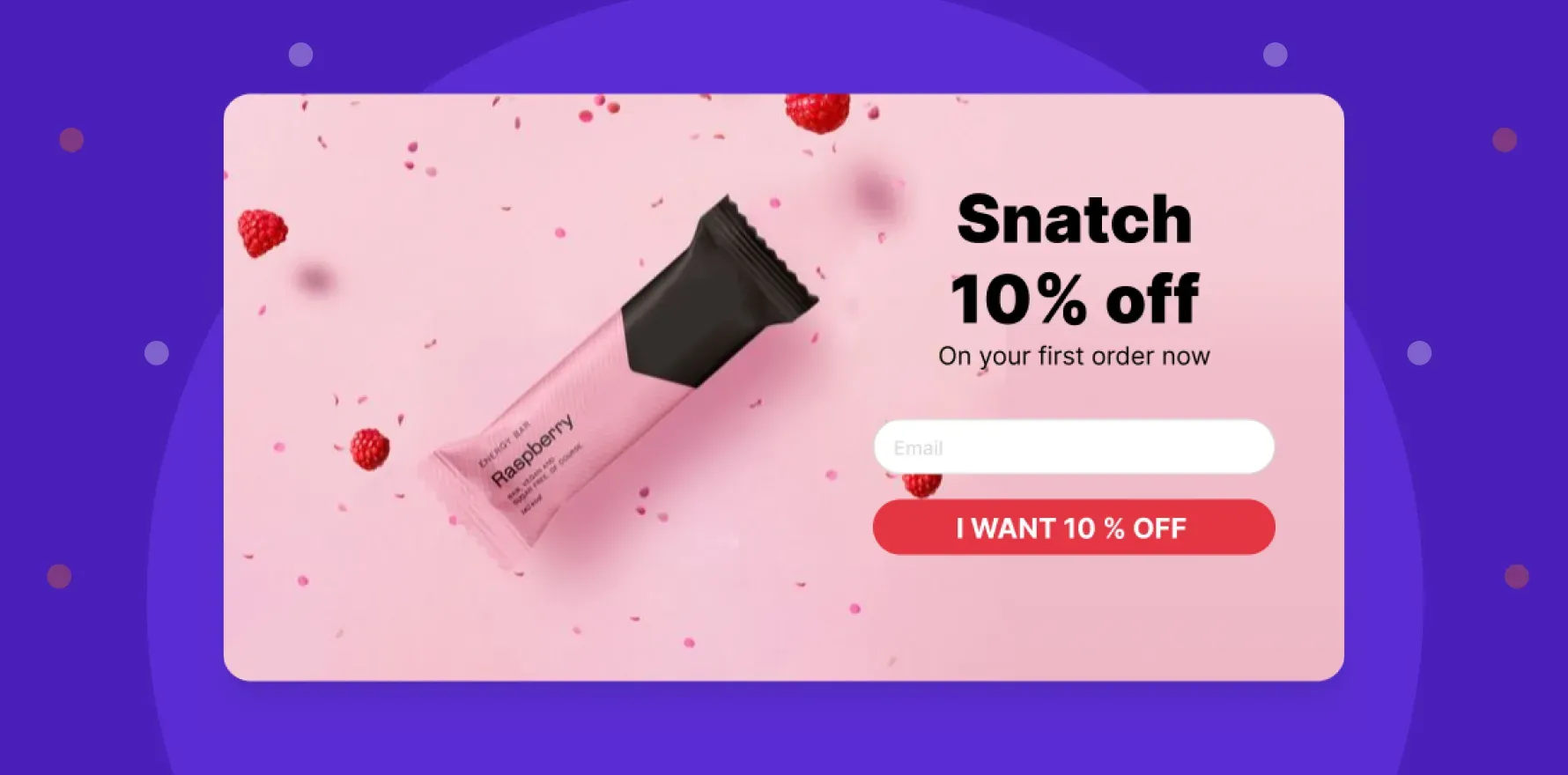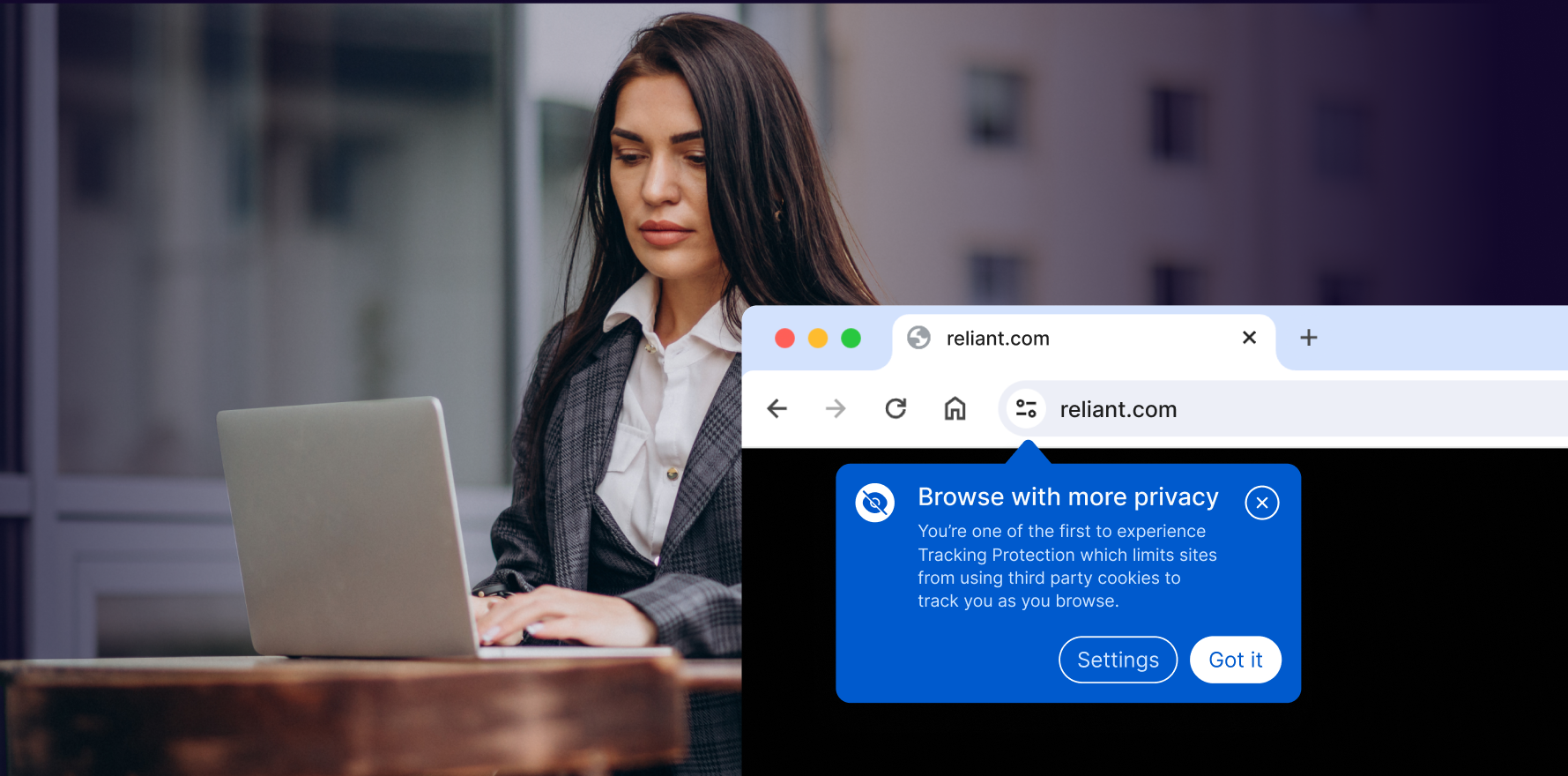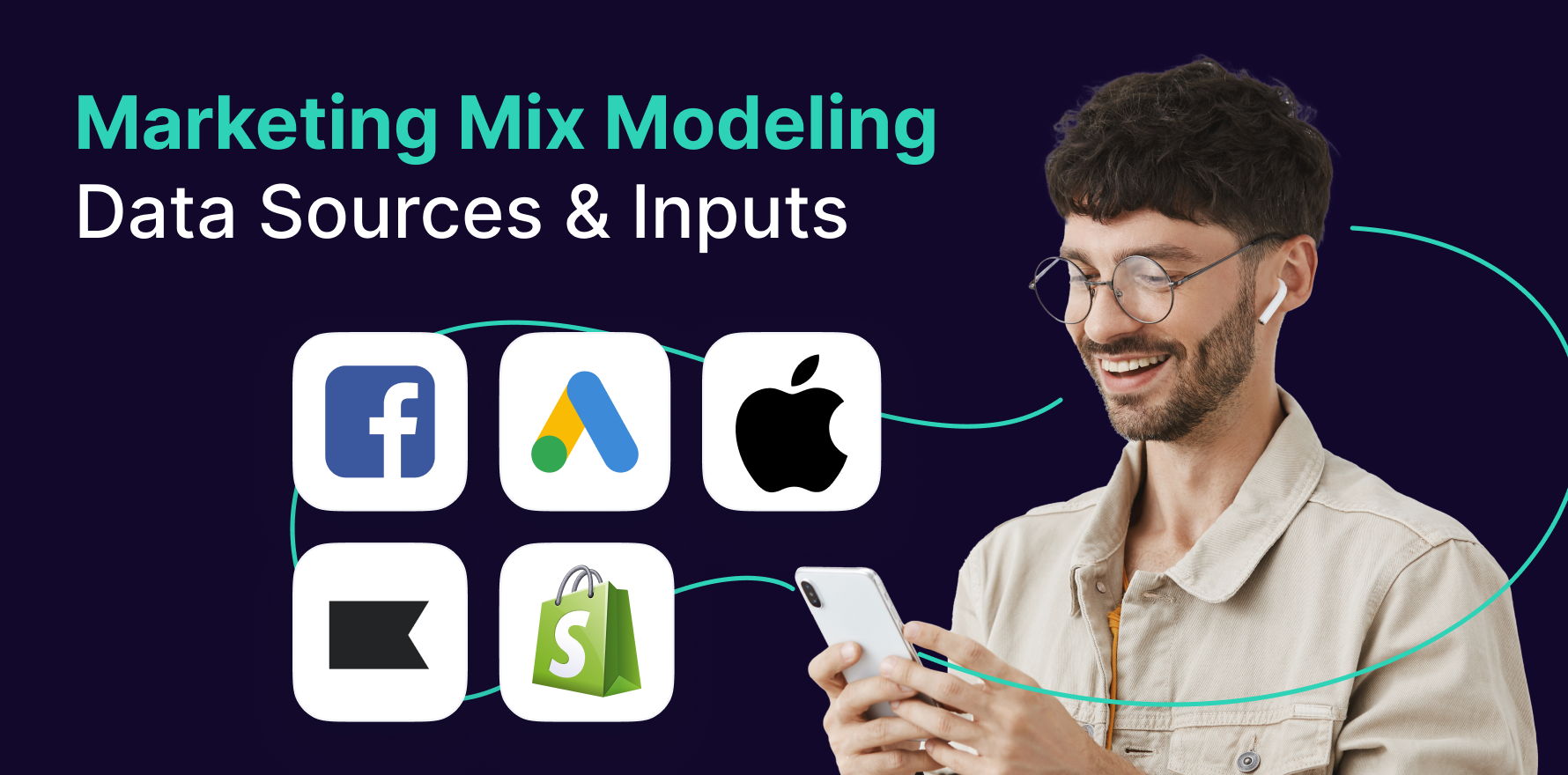With the growing third-party cookie crisis, it’s more vital than ever to find a solution to strike a balance between privacy and customer experience (CX).
Customers are increasingly skeptical of how their data is gathered and what it’s used for. Legislation such as GDPR and the CCPA has brought data privacy issues to customers’ minds.
This poses a serious issue for ecommerce and DTC brands which need to respect customer privacy while being faced with the responsibility to provide personal, relevant, and memorable experiences.
This is why you need to understand the difference between different types of customer data. In this blog post, we’ll dive deeper into the differentiation of these types of data, and showcase why you should master zero-party data.
What is customer data?
Customer data is the information you’ve collected from your websites, apps, or other situations where people have shared information with you, such as in emails, surveys, or messaging apps.
There are many different kinds of customer data, but some of the most common ones are
- Email addresses
- First names
- Last names
- Phone numbers
- Countries of residence
- Sizes (shoes, clothing, etc.)
- Other preferences
There are a number of scenarios in which it might be useful to collect information on a customer, and we may classify them as follows:
- Third-party data
- Second-party data
- First-party data
- Zero-party data
How the data gets to the company that collects it is different for each of these types of data collection. This ranges from being completely non-consensual and happening in the background to being shared by customers freely and voluntarily:
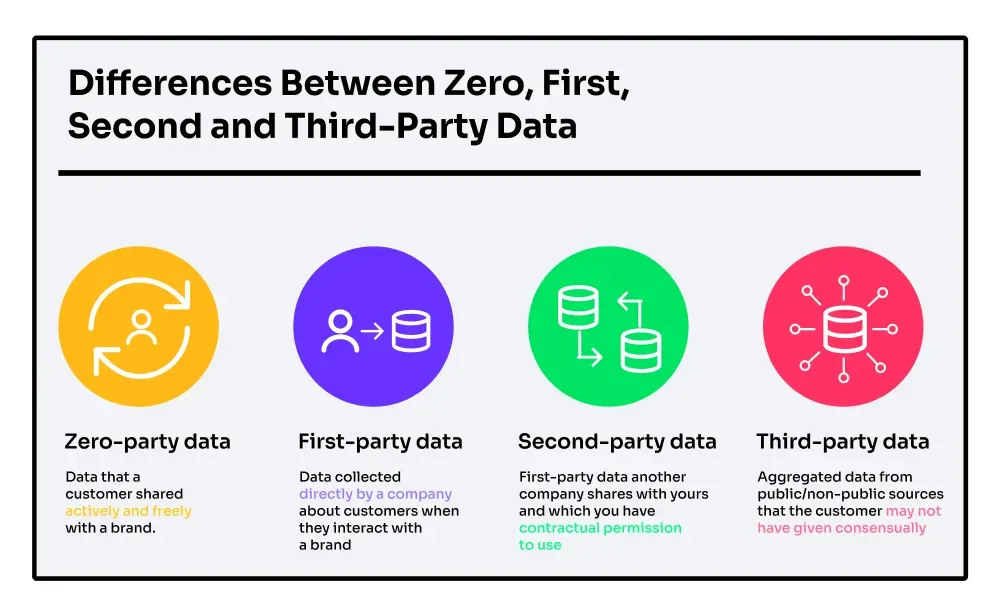
To save you time and be as specific as possible, this blog article will examine only first-party and zero-party data.
What is first-party data?
First-party data is the type of customer data a brand actually owns. It’s collected directly from customers or audiences visiting and using a brand’s websites, apps, or products.
Most of the time, this data is high-quality, detailed, and collected in the context of your own brand. This is the data you need to make hyper-personalized offerings that your customers will adore.
There are three types of first-party data:
- Relational and transactional. Things like your customers’ names and what they’ve bought in the past. The type of data you’ll find in your CRM.
- Interactional. First-party data is derived from your customers interacting with your brand, such as on your online store, app, messaging apps, customer support, or through email.
- Behavioral. Data derived from what your customer does. This includes things like scroll depth on a product page, browse and cart abandonment, purchase history, pattern, preferred product(s), etc.
First-party data is mandatory for creating a customer-centric business model. For example, your interactional first-party data might include a higher-than-average number of complaints, or returns about specific products, or a higher rate of cart abandonment for a particular product. Using this data to improve these product(s) and their associated customer experiences is a business practice that benefits your business and customers.
As per Merkle’s 2021 Customer Engagement Report:
- 41% of marketers say digital media activation will be the area most impacted due to the rise of privacy-related data restrictions.
- 88% of marketers say collecting first-party data was a 2021 priority.
While first-party data was at the top of the agenda for marketers in 2021, the report also points to the need for marketers to increase the acquisition of zero-party data in 2022 and the years to come.
What is zero-party data?
Zero-party data (ZPD) is data intentionally, (pro)actively, and freely shared by a customer with a brand. This type of data is collected through explicit and direct interaction with customers, for instance via surveys, questionnaires, emails, contests, or messaging app conversations.
The best thing about ZPD is it provides brands with the data they need to create hyper-personalized specific product suggestions, interactive experiences, and targeted marketing for each customer at scale that they love. At the same time, it ensures that customers are happy about how the data was collected and how it will be used.
“Zero-party data is gold … when a customer trusts a brand enough to provide this really meaningful data, it means that the brand doesn’t have to go off and infer what the customer wants or what their intentions are.”
– Forrester’s VP & Principal Analyst, Fatemeh Khatibloo
So, the major characteristics of zero-party data are these:
- Direct
- Private
- Trust-based
- Self-reported
- Consent-based
How do I collect zero-party data?
You can use the valuable zero-party data of your customers as long as you agree to the following:
- ZPD collection is consent-based
- You should be clear about what you plan to do with this data.
Remember this!
Customers’ need for hyper-personalization is the primary motivator for their voluntary disclosure of data. Be sure to explain how the information you gather will be used to serve your customers better. Show them how you’ll use this data to make their experience better.
You can collect ZPD in the following ways:
- Social media polls
- Interactive quizzes, contests, and games
- Preference centers on a new customer’s onboarding process
- Sale or filter alerts prompted by on-site or in-app searches
- Conversations with customer support (chat, email, or phone)
- Surveys shared by email, messaging applications, etc.
Example 1: Zero-party data collection via email
For instance, see how Shopify incentivizes customers to give feedback in this email:
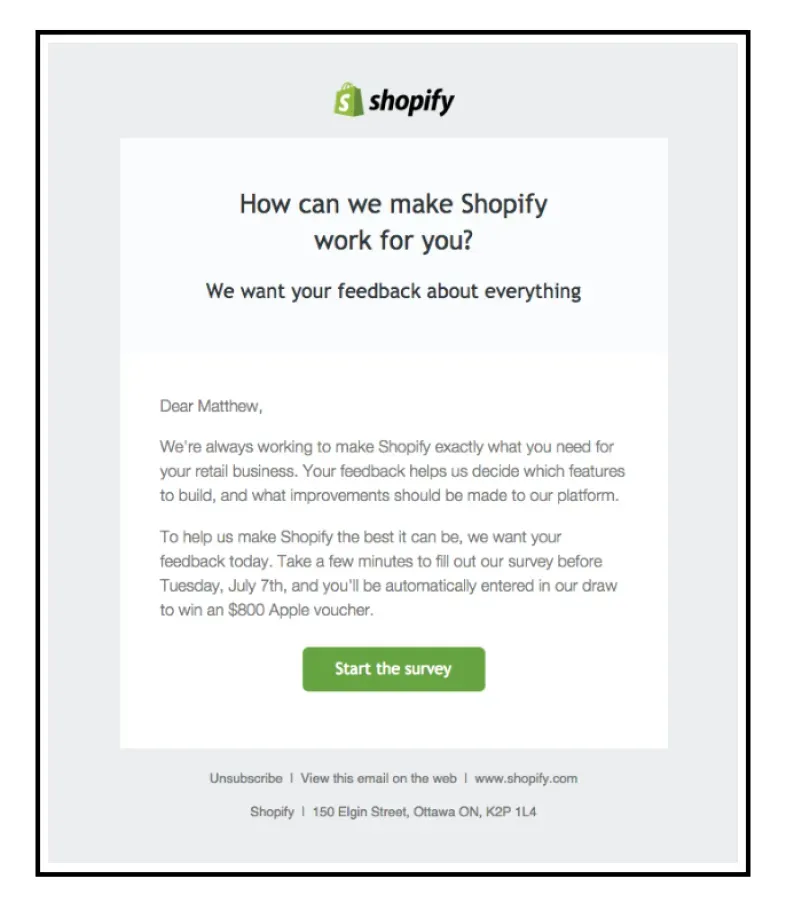
Setting up this email can be done in minutes, and is a great way to collect zero-party data. Simple, voluntary, and self-reported insights from your customers.
Example 2: Zero-party data collection via omnichannel opt-in alerts
You can also collect ZPD by letting your customers opt-in to receive all types of alerts on messaging apps.
If you run a DTC brand, there might be times when your products go out of stock. By letting customers opt into a one-time notification when the product is back in stock, you’re building a high-interest list of engaged customers.
You can let customers choose whether they want to receive a notification on messaging apps like Messenger, WhatsApp, SMS, and on your DTC app via push notification.

You can even let users/customers opt into your newsletters, price drops, pre-order alerts, or (future) discount codes.
Building such high signal lists for DTC brands gives a wealth of ZPD about your customer.
Example 3: Zero-party data collection via quiz
Innovative marketers have devised creative ways to capture this data, even while amusing customers in some circumstances.
With the goal of collecting ZPD from interested visitors and returning customers, My Jewellery developed the style profile test, a quiz that assists buyers in determining which items fit their unique style.
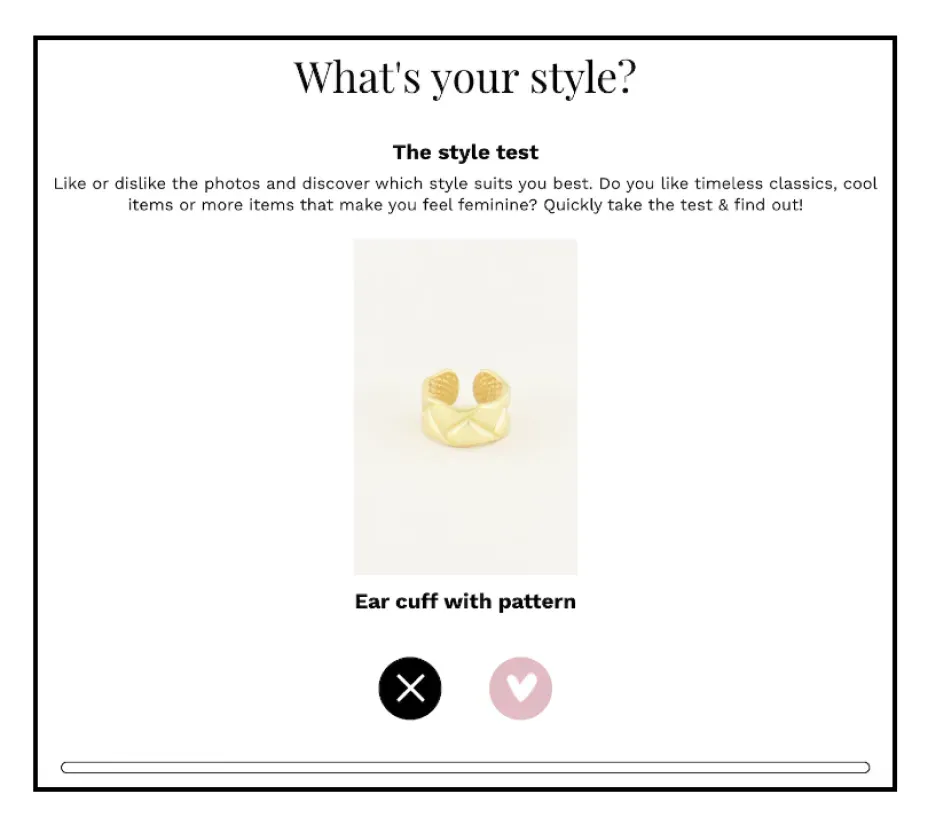
The quiz enabled My Jewellery to upgrade hyper-personalization, increased customer service, and curbed additional risk-taking in data collection for My Jewellery.
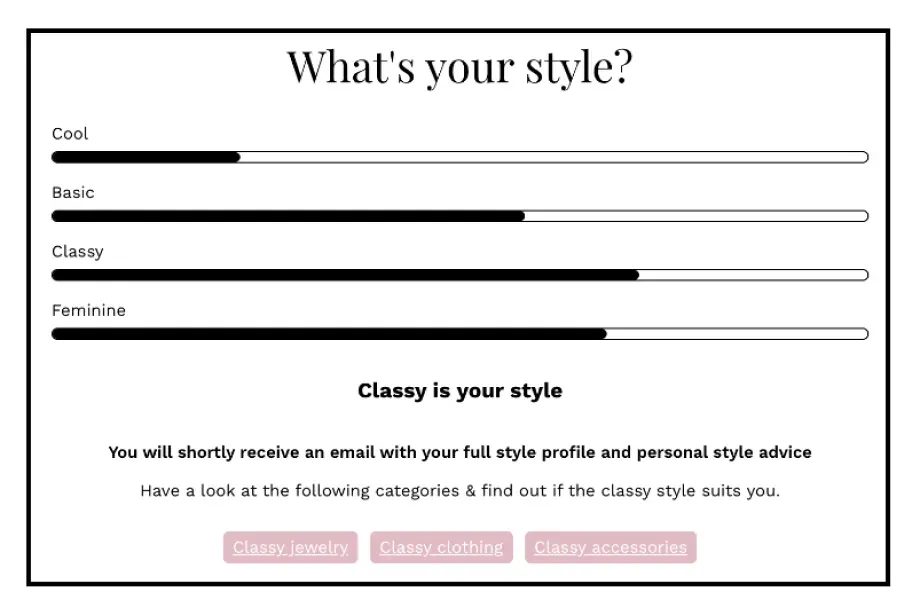
Caution
Customers may provide you with this information voluntarily and in good faith, but there is no way to know for sure that it is totally accurate.
Hot tip
Try not to ask for too much information from your customers while collecting ZPD. You can make it simpler for customers to provide you with the information you require by reducing the quantity of ZPD that you ask them to provide.
How to collect zero-party data on your ecommerce website/app?
There are three steps to collecting ZPD on your ecommerce brand’s website/app:
Decide what data you need from customers to hyper-personalize your product recommendations, emails, and text messages to them.
Collect the data you need by asking questions to people who come to your website/app.
Integrate the information into your marketing automation software like Lifesight and utilize it to personalize flows and SMS-based campaigns. Determine first what zero-party data is necessary to obtain in order to customize the customer experience.
Imagine working in a store where people came in all day to ask questions about a product you were selling. There would be a wide variety of people seeking various types of assistance and attempting to resolve a wide variety of issues.
Finally, what would you do? You would tell them some generalizations and certain details unique to the information they shared with you. You should pay special attention to the scenarios in which you would change the way you normally communicate with a certain person.
You can determine what kind of information you need in this way. Try to anticipate the range of interactions you could have with customers and the ways in which their responses might alter your approach. Then write down a list of the data you need to collect to personalize your emails and SMS.
Collect ZPD by asking questions in exchange for giving hyper-personalized product recommendations and/or a discount.
More often than not customers are eager to share their thoughts and develop stronger connections with the brands they buy from when asked questions. Showing that you, as a company, care about what your customers think can be accomplished through thoughtful questioning. To further prove that you are here to genuinely help, you can also provide discounts and suggestions for related products, you are also showing that you are here to provide real value.
How to use zero-party data for hyper-personalization?
There are multiple ways of using ZPD. For instance, conversational pop-ups can be used when a customer first visits your website/app, goes to a specific product page, or is about to leave your website/app.
These are easy to set up, they convert better, and they recommend a product inside of the pop-up:
For example, a skincare DTC brand can hyper-personalize its message flows like this:
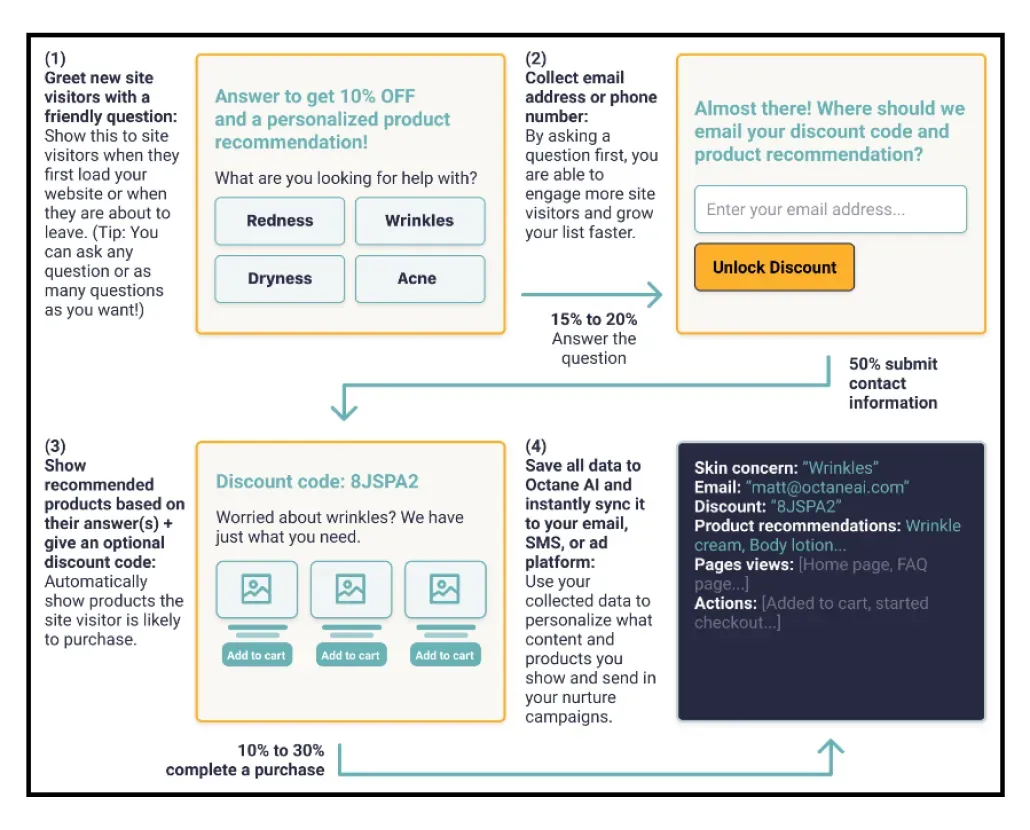
You can use ZPD to hyper-personalize email and SMS automation:
- Conditional split: Send a different email in an automated flow. For example, suppose someone has said they have never used your type of product before. In that case, you could have a conditional split in your welcome series that checks if they said they have experience with it or not and then automatically either send an educational email or skip to the next email.
- Hyper-personalized subject lines: Show different text in the subject line. For example, if someone is shopping at a healthcare DTC brand’s online store, they may have answered a question signifying what their health goal was (to lose weight, to get more energy, to combat a condition, etc). A subject line like “Our customers love our products” can be hyper-personalized to say “Our customers love our products for [insert reason that relates to the person you are emailing]” (“Our customers love our products for improving weight loss”).
- Hyper-personalized products: Recommend products that that person would specifically like or need instead of recommending the same products to everyone in your mailing or SMS lists. For example, if someone tells you that they are looking for trousers and their style is gothic, don’t recommend every product you have instead recommend your selection of gothic trousers.
- Hyper-personalized images: Show different images. For example, if someone is shopping for pet food and they tell you they have a dog, auto-switch out the images in your emails to include dogs and not cats.
- Hyper-personalized copy: Show different copies. For example, if someone says they are worried about wrinkles, auto-change the copy of your email to say one thing to people who are worried about wrinkles (“I know you want to keep wrinkles at bay.”) people who are worried about acne should also know this (“I know you are looking to protect against acne”).
Let’s grow together
The Lifesight team has a wonderful repository of templates to both collect zero-party data and also to hyper-personalize and automate your campaigns and messages with zero-party data.
And this is only the beginning of a completely hyper-personalized customer experience powered by automation and artificial intelligence.
If this is the future you see for your DTC brand, we would love to work with you. Talk to us.
You may also like
Essential resources for your success
